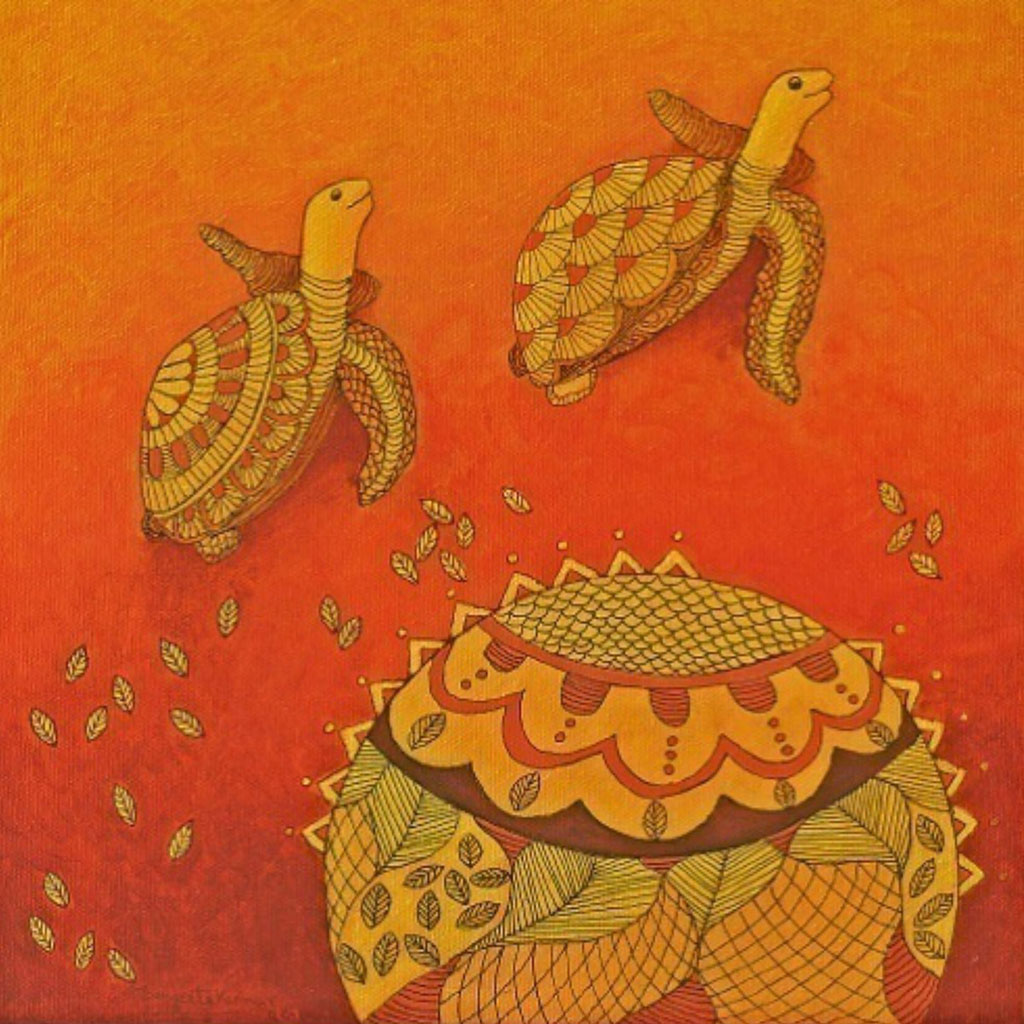In the set of these three paintings, the life of tortoises and turtles in their habitat is depicted. They are in their leisure mode, enjoying the bliss of their surroundings. The earthen colours are used in the paintings, and life underwater is designed elaborately and is complex. Tortoises are land-only animals and do not swim. Turtles can be aquatic, semi-aquatic, or live mostly on land. They do no harm; in fact do a lot of good. Turtles are even bio-engineers, keeping the landscape healthy and varied by dispersing seeds. They also rotate, including the sand on the sea floor and redistributing energy from one ecosystem to another. An absence of turtles would be a “cultural, psychological loss,” to many societies. We should admire their traits of persistence and serenity. Turtles are now amongst the most threatened groups of vertebrate animals on earth, much more than birds, mammals, fish, or amphibians. These animals outlived the dinosaurs and have roamed the earth for above 200 million years. Approximately 61 percent of the world’s 356 turtle species are threatened or already extinct and the decline could have ecological consequences. Reasons for the decline of turtles worldwide include habitat destruction, over-exploitation for pets and food, disease, and climate change. The paintings here put forth the thoughts that – more clearly if we can focus our attention on the wonders and realities of the universe about us, the less taste we shall have for destruction.


